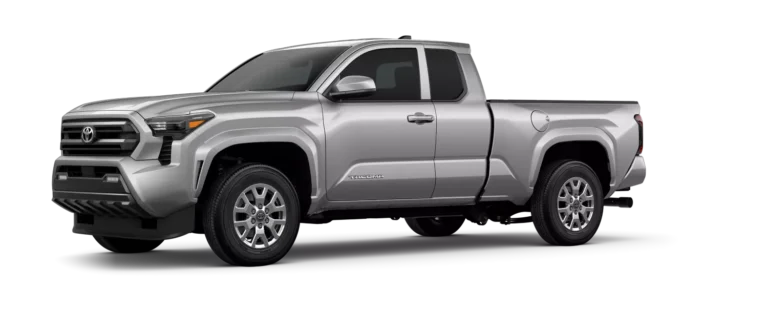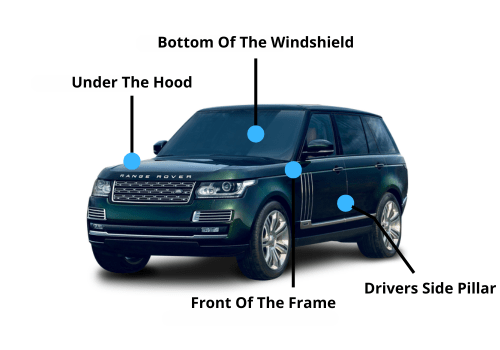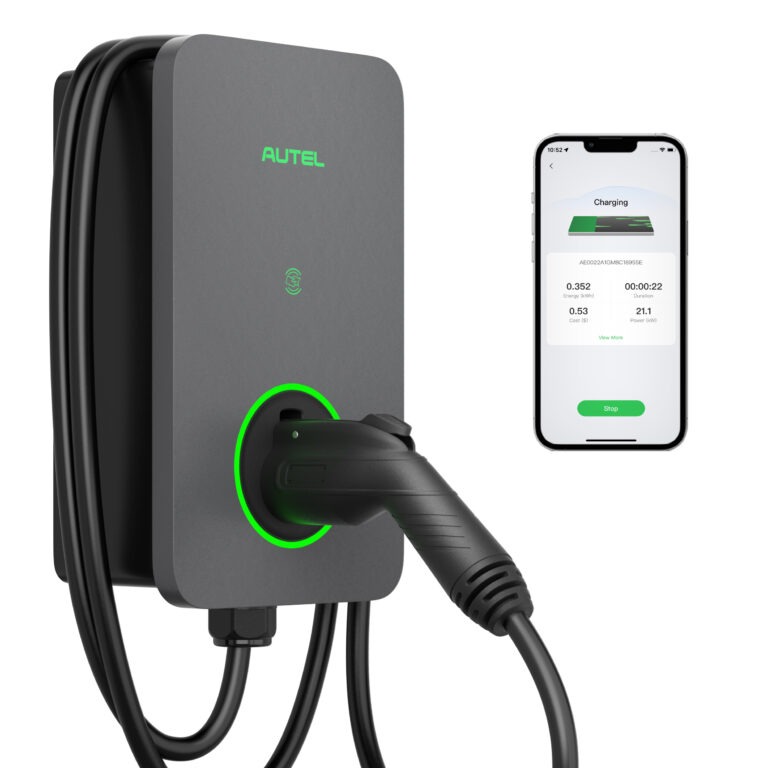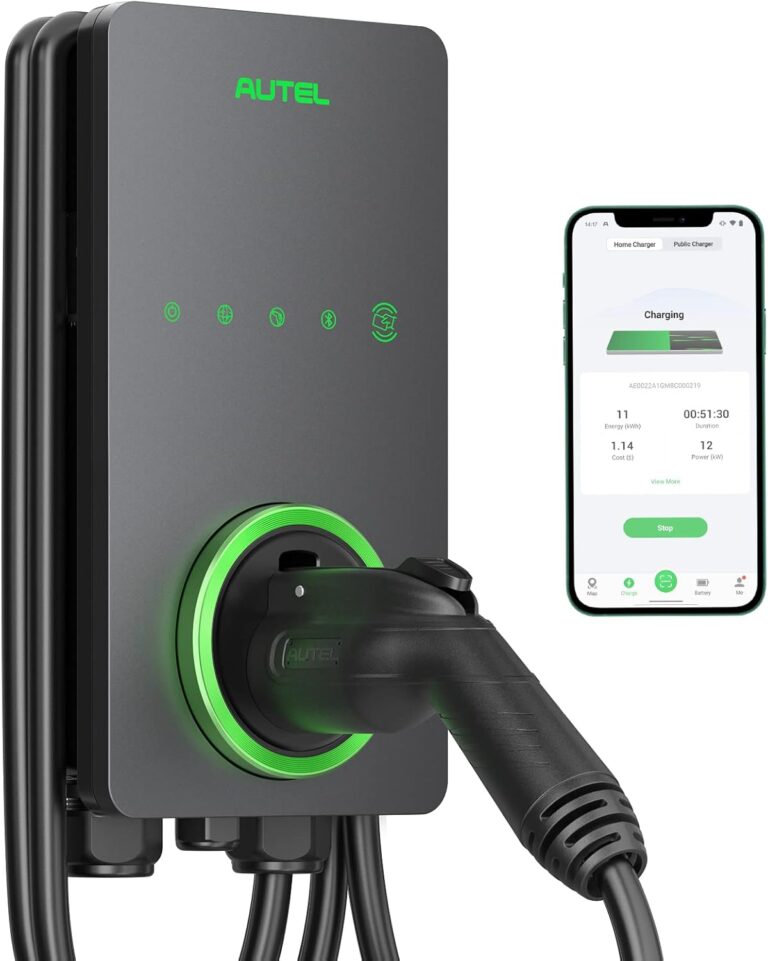
Land Rover VIN Decoder
Don’t risk hidden issues! Click ‘Check Any VIN Now’ to see recalls, problems, issues, and more! Just enter your VIN and email to get your report.
Free Land Rover VIN Decoder
Your Ultimate Guide To Land Rover VIN Decoders!
Land Rovers. The name evokes images of sophisticated exploration, luxurious off roading, and a heritage of British engineering. However, Land Rovers also have a reputation for reliability challenges, making it even more crucial to understand a vehicle’s history before purchase.
Knowing a Land Rover’s past, including maintenance records and potential issues, can be the difference between an enjoyable ownership experience and a costly headache. That’s where the secret code that unlocks the complete story of your vehicle comes in: the Vehicle Identification Number (VIN).
This 17 character sequence is more than just a serial number; it’s the key to understanding your Land Rover’s origins, specifications, and even its past, including potential red flags. This guide will make sure you can decipher your Land Rover’s VIN, whether you’re considering a brand new Defender or a classic Range Rover, helping you make an informed decision and potentially avoid costly repairs down the road.
What Is A Land Rover VIN Decoder
Think of a Land Rover VIN decoder as something that deciphers your Land Rover’s DNA. Instead of just seeing a sequence of letters and numbers, a VIN decoder reveals details like the original factory specifications (engine, transmission, trim level, options, paint color, etc.), its manufacturing location, and often its production date. For Land Rovers, a reliable VIN decoder is especially critical, given the brand’s diverse model lineup (Defender, Discovery, Range Rover, etc.), trim levels (SE, HSE, Autobiography, etc.), engine variations (Ingenium, AJ-V8, etc.), and special editions. It’s not just a generic vehicle decoder; it’s tailored to the nuances and complexities of the Land Rover marque, helping you understand the unique story behind your vehicle, which is particularly important given the brand’s reputation for potential reliability issues.
Table of Contents
Decoding Land Rover Model Codes
Model Codes
- LB – Series III
- LD – Ninety, One Ten, 127, Defender
- LH – Range Rover
- LJ – Discovery
- LM – Range Rover L322
- LN – Freelander
- LP – Range Rover (P38A)
- LT – Discovery Series II

Wheelbase Codes
- A – Series III 88″, Defender 90″ extra heavy duty, Range Rover Classic 100″, Range Rover (38A) 108″, Freelander
- B – Series III 88″ Lightweight, Defender 110″ extra heavy duty, Range Rover Classic LSE 108″, Freelander Commercial
- C – Series III 109″, Defender 130″ extra heavy duty
- D – Series III 109″
- G – 100″ (Discovery)
- H – 110″ (Land Rover)
- K – 130″ (Land Rover)
- M – Special Build
- R – 110″ (24 volt)
- S – 90″ (24 volt)
- V – 90″ (Land Rover)

Engine Codes
- A – 1.8L, inline-4, K-Series, High Compression Unleaded
- B – 2.5L, inline-4, turbo-diesel / 19J 2.0L, inline-4, L-Series, turbo-diesel
- C – 2.5L, inline-4, diesel / 12J 1.8L, inline-4, K-Series, Low Compression Unleaded
- D – 2.5L, inline-4, petrol / 17H 1.8L, inline-4, K-Series, Low Compression Leaded
- E – 3.5L, V8 carb, petrol, High Compression / 2.4L, inline-4, VM Diesel / 2.0L, inline-4, BMW M47 (Td4), diesel
- F – 2.5L, inline-4, turbo-diesel (200Tdi/300Tdi) non EGR/cat / 1.8L, inline-4, K-Series, High Compression Leaded
- G – 2.25L, inline-4, diesel / 2.5L, V6, KV6 Series, Unleaded
- H – 2.25L, inline-4, petrol / 2.5L, V6, KV6 Series, Leaded
- J – 4.6L, V8 Efi, petrol / 2.5L, V6, KV6 Series, Ethanol
- L – 3.5L, V8 Efi, petrol
- M – 3.9L & 4.0L, V8 Efi, petrol
- N – 2.5L, inline-4, VM Diesel
- P – 2.6L, inline-6, IOE petrol
- V – 3.5L, V8 carb, petrol, Low Compression
- W – 2.5L, inline-6, BMW Diesel
- Y – 2.0L, inline-4 Mpi, petrol
- 1 – 4.0L, V8 Efi, Low Compression with Cat
- 2 – 4.0L, V8 Efi, High Compression with Cat
- 3 – 4.0L, V8 Efi, Low Compression without Cat
- 6 – 2.5L, inline-4, turbo-diesel (200Tdi/300Tdi) EGR/cat
- 8 – 2.5L, inline-5, turbo-diesel (Td5) EGR
- 9 – 2.5L, inline-5, turbo-diesel (Td5) EGR without Cat (Discovery II) / 2.8L, inline-6, M52 BMW petrol

Gearbox Codes
- 1 – Series III 4-speed / RHD, LT95 4-speed / RHD, JATCO 5-speed Auto / RHD
- 2 – Series III 4-speed / LHD, LT95 4-speed / LHD, JATCO 5-speed Auto / LHD
- 3 – Chrysler 747 3-speed Auto / RHD, ZF 4-speed Auto / RHD
- 4 – Chrysler 747 3-speed Auto / LHD, ZF 4-speed Auto / LHD
- 5 – RHD 4-speed gearbox + overdrive
- 6 – LHD 4-speed gearbox + overdrive
- 7 – LT77 5-speed Manual / RHD, LT77S 5-speed Manual / RHD, LT85 5-speed Manual / RHD, R380 5-speed Manual / RHD, PG1 5-speed Manual / RHD
- 8 – LT77 5-speed Manual / LHD, LT77S 5-speed Manual / LHD, LT85 5-speed Manual / LHD, R380 5-speed Manual / LHD, PG1 5-speed Manual / LHD

Year Of Build Codes
- A – 2010
- B – Ser. III CSW or R/R Phase II, or 90/110 facelift to 1987 M/Y / 2011
- C – R/R 1986 M/Y or 2012
- D – R/R 1987 M/Y or 2013
- E – 1988 or 2014
- F – 1989 or 2015
- G – 1990 or 2016
- H – 1991 or 2017
- J – 1992 or 2018
- K – 1993
- L – 1994
- M – 1995
- T – 1996
- V – 1997
- W – 1998
- X – 1999
- Y – 2000
- 1 – 2001
- 2 – 2002
- 3 – 2003
- 4 – 2004
- 5 – 2005
- 6 – 2006
- 7 – 2007
- 8 – 2008
- 9 – 2009

Land Rover VIN Locations

Where To Find The VIN On A Land Rover Defender
(1983-Present)
- Dashboard: Visible through the driver’s side windshield, at the base.
- Driver’s Side Door Frame: Found on the B-pillar when the door is open.
- Engine Bay: Typically stamped on the chassis near the right front wheel or on the firewall.
- Chassis Frame: Engraved on the front right-hand chassis rail (especially older models).
- Paperwork: Documented in registration papers, insurance documents, and service records.
Where To Find The VIN On A Land Rover Discovery
(1989–Present)
- Dashboard: Clearly visible through the lower-left windshield from outside.
- Driver’s Side Door Frame: Inside the B-pillar, on the compliance label.
- Engine Bay: Stamped on the firewall or front chassis crossmember.
- Paperwork: Listed in title documents, insurance records, and manufacturer warranty papers.
Where To Find The VIN On A Land Rover Discovery Sport
(2015–Present)
- Dashboard: Located at the base of the windshield, driver’s side.
- Driver’s Side Door Frame: Inside the door jamb, on the factory identification sticker.
- Engine Bay: Often stamped on the firewall or near the front strut tower.
- Paperwork: Found on registration, ownership documents, and service booklets.
Where To Find The VIN On A Range Rover
(1970–Present)
- Dashboard: Engraved at the lower-left corner of the windshield, viewable from outside.
- Driver’s Side Door Frame: Printed on a factory sticker inside the door frame.
- Engine Bay: Stamped on the chassis near the radiator support or firewall.
- Chassis Frame: Older models may have it stamped on the left front chassis leg.
- Paperwork: Recorded in title, registration, insurance policy, and warranty records.
Where To Find The VIN On A Range Rover Sport
(2005–Present)
- Dashboard: Clearly displayed at the lower-left windshield corner.
- Driver’s Side Door Frame: Found inside the door jamb, on a compliance label.
- Engine Bay: Stamped near the firewall or front strut tower.
- Paperwork: Located in ownership documents, registration, and insurance details.
Where To Find The VIN On A Range Rover Velar
(2017–Present)
- Dashboard: Easily spotted through the windshield on the driver’s side.
- Driver’s Side Door Frame: Inside the B-pillar, on the factory VIN plate.
- Engine Bay: Stamped on the chassis near the firewall or radiator support.
- Paperwork: Included in registration, insurance documents, and warranty booklets.
Where To Find The VIN On A Range Rover Evoque
(2011–Present)
- Dashboard: Found at the base of the windshield, driver’s side.
- Driver’s Side Door Frame: Inside the door jamb, printed on a compliance label.
- Engine Bay: Stamped on the chassis or near the firewall.
- Paperwork: Listed in title records, insurance documents, and service booklets.
Land over VIN Decoder - All Codes
Country of Origin
| Code | Country |
|---|---|
| UK | United Kingdom |
Manufacturer
| Code | Manufacturer |
|---|---|
| LR | Land Rover |
Model Line and Years
| Model | Years |
|---|---|
| Series I | 1948–1958 |
| Series II | 1958–1961 |
| Series IIA | 1961–1971 |
| Series III | 1971–1985 |
| Defender 90/110 | 1983–2016 |
| Defender (L663) | 2020–present |
| Range Rover Classic | 1970–1996 |
| Range Rover P38 | 1994–2002 |
| Range Rover L322 | 2002–2012 |
| Range Rover L405 | 2012–2021 |
| Range Rover L460 | 2022–present |
| Range Rover Sport L320 | 2005–2013 |
| Range Rover Sport L494 | 2013–2022 |
| Range Rover Sport L461 | 2022–present |
| Range Rover Evoque L538 | 2011–2018 |
| Range Rover Evoque L551 | 2018–present |
| Discovery Series I | 1989–1998 |
| Discovery Series II | 1998–2004 |
| Discovery 3 (LR3) | 2004–2009 |
| Discovery 4 (LR4) | 2009–2016 |
| Discovery 5 (L462) | 2017–present |
| Discovery Sport (L550) | 2014–present |
| Freelander 1 | 1997–2006 |
| Freelander 2 (LR2) | 2006–2014 |
| Velar | 2017–present |
Manufacturing Plant
| Code | Plant |
|---|---|
| SO | Solihull, UK |
| HA | Halewood, UK |
| NI | Nitra, Slovakia |
How To Decode a Land Rover VIN
First Character – Country of Manufacture:
The first character reveals where the Land Rover was assembled. This is key, as Land Rovers have been produced in various locations globally.
- S = United Kingdom (often, but not always)
- Other codes may exist depending on the specific Land Rover model and production era. Thorough research is essential.
Second Character – Manufacturer:
This character identifies the manufacturer. For Land Rover, this typically signifies Land Rover itself, but it can vary depending on historical ownership and partnerships. Verify the specific code for the Land Rover you’re examining.
Third Character – Vehicle Type:
This character describes the vehicle type. Land Rover uses a range of codes, and their meanings can be nuanced. It generally classifies the vehicle type (e.g., passenger car, SUV), but the precise interpretation can differ.
Characters 4 to 8 – Vehicle Descriptor Section (VDS):
These five characters provide vital details about the Land Rover, including model line, body style, engine, and trim level. This is where the most Land Rover specific information resides.
- Model/Series (Position 4): Might indicate the general model family (e.g., Defender, Discovery, Range Rover).
- Body Style/Trim (Position 5): Often related to the number of doors or a general trim level. Land Rover’s trim levels (SE, HSE, Autobiography, etc.) are complex, so this isn’t always a direct correlation.
- Trim/Equipment (Position 6): Can be related to trim level and options. Land Rover has a wide array of options, and this character may reflect some of them.
- Restraint System/GVWR (Position 7): Relates to safety features and weight rating.
- Engine Type (Position 8): Extremely important for Land Rovers. This identifies the engine (e.g., Ingenium, AJ-V8, etc.). Land Rover has utilized various engines over the years, making this code crucial.
Ninth Character – Check Digit:
A security code used to verify the VIN’s authenticity.
Tenth Character – Model Year:
Indicates the vehicle’s model year. Land Rover uses the standard VIN system.
Eleventh Character – Assembly Plant:
Identifies the factory where the Land Rover was assembled. This is highly relevant for Land Rovers, as different models are made in different plants.
Characters 12 to 17 – Serial Number:
A unique production number for the specific vehicle.
Example Land Rover VIN Breakdown (Hypothetical):
VIN: SAL L322 A9B12345
- S = Built in the UK (often, but not always)
- A = Land Rover (or related manufacturer)
- L = Vehicle type (specific meaning varies)
- L322 = Range Rover (example; codes can change)
- A = Body style/trim (specific meaning varies)
- 9 = Trim/equipment (specific meaning varies)
- B = Engine type (very important!)
- 1 = Restraint system/GVWR
- 2 = Check digit
- 3 = Model year (refer to the year code chart)
- 4 = Assembly plant (specific meaning varies)
- 5 = Unique serial number
How To Interperet Different VIN Characters
First Character – Country of Manufacture:
The first character indicates where the Land Rover was assembled. This is important, as Land Rovers have been produced in various locations globally.
- S = United Kingdom (This is common, but not always the case. Other codes exist depending on model and era).
- Other codes may exist. Research is key.
Second Character – Manufacturer:
This character identifies the manufacturer. For Land Rover, this typically signifies Land Rover itself, but it can vary depending on historical ownership and partnerships. Verify the specific code.
Third Character – Vehicle Type:
This character describes the vehicle type. Land Rover uses a range of codes, and their meanings can be nuanced. It generally classifies the vehicle type (e.g., passenger car, SUV), but the precise interpretation can differ.
Characters 4 to 8 – Vehicle Descriptor Section (VDS):
These five characters provide vital details about the Land Rover, including model line, body style, engine, and trim level. This is where the most Land Rover-specific information resides. This is also the most challenging part to decode.
- Model/Series (Position 4): Might indicate the general model family (e.g., Defender, Discovery, Range Rover). Often a letter.
- Body Style/Trim (Position 5): Often related to the number of doors or a general trim level. Land Rover’s trim levels (SE, HSE, Autobiography, etc.) are complex, so this isn’t always a direct correlation. Often a number.
- Trim/Equipment (Position 6): Can be related to trim level and options. Land Rover has a wide array of options, and this character may reflect some of them. Often a number.
- Restraint System/GVWR (Position 7): Relates to safety features and weight rating. Often a letter.
- Engine Type (Position 8): Extremely important for Land Rovers. This identifies the engine (e.g., Ingenium, AJ-V8, etc.). Land Rover has utilized various engines over the years, making this code crucial. Often a letter.
Ninth Character – Check Digit:
A security code used to verify the VIN’s authenticity.
Tenth Character – Model Year:
Indicates the vehicle’s model year. Land Rover uses the standard VIN system (a letter or number corresponding to the year).
Eleventh Character – Assembly Plant:
Identifies the factory where the Land Rover was assembled. This is highly relevant for Land Rovers, as different models are made in different plants.
Characters 12 to 17 – Serial Number:
A unique production number for the specific vehicle.
Example Land Rover VIN Breakdown (Hypothetical):
VIN: SAL L322 A9B12345
- S = Built in the UK (often, but not always)
- A = Land Rover (or related manufacturer)
- L = Vehicle type (specific meaning varies)
- L322 = Range Rover (example; codes can change – this is a general indicator)
- A = Body style/trim (specific meaning varies)
- 9 = Trim/equipment (specific meaning varies)
- B = Engine type (very important!)
- 1 = Restraint system/GVWR
- 2 = Check digit
- 3 = Model year (refer to the year code chart)
- 4 = Assembly plant (specific meaning varies)
- 5 = Unique serial number
Free Land Rover VIN Decoders
Start with General VIN Decoders (But Don’t Rely on Them for Land Rover Specifics): Many websites offer free VIN decoding, but their Land Rover coverage is often basic. They might give you the year, make, and model, but not the detailed trim, options, or engine specifics. Search for “free VIN decoder” and try a few different sites. Look for ones that specifically mention Land Rover or British makes.
Focus on Model-Specific Land Rover Forums: This is the most valuable approach. Search for forums dedicated to your Land Rover model (e.g., “Range Rover L322 forum,” “Discovery 3 forum”). These communities often have members with extensive knowledge who can help decode VINs or point you to resources.
Check the NHTSA Website (For Recalls): The National Highway Traffic Safety Administration (NHTSA) website (https://www.nhtsa.gov/) is essential for checking for recalls. While it doesn’t decode the entire VIN, it’s crucial for safety information.
Look for Land Rover-Specific Resources (If They Exist): Occasionally, you might find websites or tools created by Land Rover enthusiasts that focus on VIN decoding for specific models. These are rare but can be incredibly helpful.
Information You Can Get from Free Land Rover VIN Decoders
- Year, Make, and Model: This is the most common information you’ll get. The decoder will usually tell you the year the vehicle was manufactured, the make (Land Rover), and the general model (e.g., Range Rover, Defender, Discovery).
- Manufacturing Country: The World Manufacturer Identifier (WMI) will usually tell you where the vehicle was assembled (e.g., UK).
- Basic Vehicle Specifications: Some decoders might give you very basic specs, such as the engine type (e.g., V8, diesel), but often without specific details like horsepower or displacement. Trim levels are rarely accurately identified by free decoders.
- Recall Information (Sometimes): Many decoders will link to or integrate with the NHTSA recall database, allowing you to check for any outstanding recalls on your Land Rover. This is a very important piece of information, especially for used vehicles.
Best Land Rover VIN Decoders
- carVertical is often praised for its comprehensive reports and focus on uncovering hidden damage and mileage fraud. Some users find their reports particularly detailed, which can be valuable for a complex vehicle like a Land Rover. They often emphasize European market data, which is a plus for Land Rovers.
- EpicVin: EpicVin aims to offer a balanced approach, pulling data from numerous sources to deliver a comprehensive overview. They often emphasize uncovering hidden damage and mileage fraud. It’s a solid choice for getting a good general vehicle history. The ability to pull data from multiple sources is very helpful for potentially uncovering more records.
- Land Rover TOPIx (Technical Information): This is not technically a VIN decoder in the same way as the others, but it’s crucial for Land Rover owners and buyers. TOPIx is Land Rover’s official technical information portal. While it requires a paid subscription (you can buy short term access), it provides access to:
- Vehicle Configuration: This is the most valuable part for your purposes. You can enter the VIN and get a complete list of factory installed options, equipment, and specifications. This is the definitive source for how the vehicle was built.
- Technical Service Bulletins (TSBs): Information on known issues and fixes for your specific model and year.
- Workshop Manuals: Detailed repair procedures.
- Wiring Diagrams: Essential for troubleshooting electrical problems.
- Notes: TOPIx is more technical and requires some automotive knowledge to navigate effectively. However, for understanding the original configuration of the Land Rover, it’s unmatched. Accessing the vehicle configuration is crucial for understanding what systems (e.g., suspension, engine) were originally installed. TOPIx is available here: https://topix.landrover.jlrms.com/
- AutoCheck (Experian): Run by Experian, AutoCheck is a popular paid service. It focuses on providing a vehicle history report and a risk assessment score. It often provides a competitive price. AutoCheck is a solid general history report service.
- CARFAX: While widely used, CARFAX can sometimes be less detailed than other options, especially for European vehicles. It’s still a good starting point, but don’t rely on it as your only source of information.
Benefits Of A Using Paid VIN Decoder
More Comprehensive Data: Paid VIN decoders often have access to more extensive and proprietary databases. This means they are more likely to provide detailed information that free decoders miss, especially for the crucial Vehicle Descriptor Section (VDS). This can include:
- Accurate Trim Level: Identifying the exact trim level (SE, HSE, Autobiography, etc.) is often difficult with free tools. Paid decoders are more likely to get this right.
- Specific Engine Details: Instead of just a general engine type (e.g., “V8”), a paid report might give you the exact engine code, horsepower, torque, displacement, and other specific details.
- Factory Installed Options: While decoding all factory options from the VIN can be challenging even for paid services, they are more likely to provide some information about options that free decoders miss.
- Original MSRP: Some paid reports will include the original manufacturer’s suggested retail price, which can be useful for evaluating a vehicle’s value.
- Sales History (Sometimes): Some reports might provide limited information about past sales or ownership.
Where Do i Find The VIN Number On My Land Rover
These are the first places you should check:
Dashboard (Driver’s Side): This is the most accessible and common location. Stand outside your Land Rover, on the driver’s side. Look at the lower corner of the dashboard where it meets the windshield. The VIN should be visible through the glass.
Driver’s Side Doorjamb: Open the driver’s side door. Look on the doorjamb (the area where the door latches). You should find a sticker containing the VIN, along with other vehicle information like tire pressure and manufacturing date.
Other Potential Land Rover VIN Locations:
If you can’t find the VIN in the common locations, check these areas:
Vehicle Title and Registration Documents: The VIN will always be printed on your Land Rover’s official title and registration.
Insurance Card/Policy: Your car insurance card or policy documents will also list the VIN.
Under the Hood – Firewall: On some Land Rover models, you might find a metal plate or sticker with the VIN attached to the firewall (the metal panel separating the engine compartment from the passenger cabin).
Engine Compartment – Inner Wings/Fenders: Less common, but inspect the inner wings/fenders inside the engine bay. A partial VIN might be stamped there, especially on older models.
Chassis/Frame Rail: On older Land Rovers, the VIN might be stamped directly onto the chassis or frame rail. This is often difficult to see due to dirt, rust, or undercoating. You’ll likely need to get underneath the vehicle and use a flashlight.
Finding Your Land Rover VIN on Older Models
Locating the VIN (Vehicle Identification Number) on older Land Rovers, particularly those from the Classic era (pre-2000), can be significantly more challenging than on modern vehicles. The VIN might be in less obvious locations, obscured by decades of dirt and rust, or even missing altogether due to restoration work or accidents. This guide specifically addresses the challenges of finding the VIN on classic Land Rovers like the Defender, Range Rover Classic, Discovery 1, and Series models.
Less Obvious VIN Locations for Older Land Rovers:
In addition to the common locations (dashboard and doorjamb, though these may be missing or illegible on older vehicles), check these areas carefully:
Chassis/Frame Rails: This is often the only place you’ll find a VIN on older Land Rovers. Get underneath the vehicle with a strong flashlight and a wire brush. Look for stamped numbers on the chassis rails, particularly:
Front Right (Passenger Side) Chassis Rail: This is a common location on many older Land Rover models. Look near the suspension mounting points.
Rear Chassis Rails: Inspect the rear chassis rails, especially on the right (passenger) side.
Note: The stamping might be faint, incomplete (a partial VIN), or obscured by rust, undercoating, or previous repairs. You might need to clean the area thoroughly with a solvent.
Body Panels (Less Common): On very early Land Rover models (Series I, II, and IIA), the VIN (or chassis number) might be stamped on certain body panels, such as:
Under the Hood – Bulkhead/Firewall: Inspect the bulkhead (firewall) under the hood carefully.
Behind the Seats: Some Series models had the chassis number stamped on a plate behind the seats. This is extremely rare.
Original Build Plates (If Still Present): Older Land Rovers often had small metal plates riveted to the vehicle with the chassis number and other information. These plates might be found:
Under the Hood: On the firewall or inner wings.
Inside the Cabin: Attached to the dashboard or other interior panels.
Note: These plates are often missing or illegible due to age and corrosion.
Engine Block (Rare): In some cases, a partial VIN or engine number might be stamped on the engine block. This is very difficult to access and often requires removing engine components.
How Do I Find the VIN in the Land Rover app (InControl)
- Open the Land Rover InControl Remote App (or Range Rover App): Launch the InControl Remote app on your smartphone or tablet. The specific app name may vary slightly depending on your Land Rover’s model year (e.g., “Land Rover Remote,” “Range Rover Remote,” or simply “InControl Remote”).
- Log In (If Necessary): Enter your username and password to log in to your InControl account.
- Select Your Vehicle: If you have multiple Land Rovers connected to your account, make sure you select the correct vehicle. There should be a vehicle selection area on the app’s main screen, possibly a dropdown menu or a carousel.
- Navigate to Vehicle Information: The exact location of the VIN information within the app can differ based on the app version and your specific Land Rover model, but generally look for one of these options:“Vehicle Information” or “My Vehicle”, “Vehicle Details”, “Settings” and then “Vehicle Information”
- “Account” or “Profile” and then “Vehicle Details”
- Locate the VIN: Once you’re in the vehicle information section, scroll down or look for a field labeled “VIN” or “Vehicle Identification Number.” The 17-character VIN should be displayed there.
Discover the value of your cars options and specification!
- Select from thousands of vehicles and options
- See how each option adds value to your car
- Discover which tech features add a premium
- Spot which options hold their value over time
- Find out if that 'Sport' package pays off later
- Identify high value features others miss
$355 $354 $353 $352 $351 $350
How to Check for Land Rover Recalls by VIN: A Step by Step Guide
1. Locate Your VIN:
- Windshield: The most common location is on the driver’s side dashboard, visible through the windshield.
- Doorjamb: Check the driver’s side doorjamb.
- Engine Bay: Sometimes, the VIN is stamped on a metal plate in the engine bay.
- Frame Rail: On older models, it might be stamped on the frame rail.
- Vehicle Documents: The VIN is also listed on your Land Rover’s title, registration, and insurance documents.
2. Use the Official Land Rover Recall Website (If Available):
- Some manufacturers have dedicated recall lookup tools on their websites. Check the official Land Rover website for your region. Look for a “Recalls,” “Safety,” or “Owners” section. If they have a VIN lookup tool, this is the best place to start.
3. Use the NHTSA (National Highway Traffic Safety Administration) Website (US-focused):
- The NHTSA website (https://www.nhtsa.gov/recalls) is a great resource, especially if your Land Rover was originally sold in the United States. Their recall database is comprehensive and regularly updated.
- Enter your 17-digit VIN into the search tool on the NHTSA website.
- The system will check for any open recalls on your vehicle and provide information about the recall, including the affected models and the remedy.
4. Check Other Regional or Country Specific Recall Websites (If Applicable):
- If your Land Rover was sold outside the US, there might be other government or consumer protection agencies in your region that maintain recall databases. Search online for “[your country] vehicle recalls” or “[your region] car recalls.”
5. Contact Your Local Land Rover Dealership:
- If you’re unsure about how to check for recalls or if you have any questions, contact your local Land Rover dealership’s service department.
- They can use your VIN to check for any outstanding recalls and advise you on the next steps.
Useful Resources For Checking A Land Rover Recall
-
National Highway Traffic Safety Administration (NHTSA) (US-focused): https://www.nhtsa.gov/recalls – If your Land Rover was originally sold in the United States, this is the best place to start. Their database is comprehensive and easy to use. You enter your VIN, and it checks for any open recalls.
-
Land Rover’s Official Website (Check Your Region): Many car manufacturers have recall lookup tools directly on their websites. Go to the official Land Rover website for your country or region. Look for sections like “Owners,” “Support,” “Safety,” or “Recalls.” They might have a VIN lookup tool specifically for Land Rovers. This is ideal if available as it will be the most accurate.
Other Potential Resources (Depending on Location):
-
Transport Canada (Canada): https://tc.canada.ca/en/road-safety/recalls – For Land Rovers sold in Canada.
-
DVSA (Driver and Vehicle Standards Agency) (UK): https://www.gov.uk/check-vehicle-recall – For Land Rovers sold in the United Kingdom.
-
European Union Recall Portal: The European Union has a recall portal that might be helpful if your Land Rover was sold in an EU country. Search online for “European Union car recalls.”
-
Your Country’s Equivalent Agency: Most countries have a government agency responsible for vehicle safety and recalls. Search online for “[your country] vehicle recalls” to find the appropriate website.
Other Avenues:
-
Land Rover Dealership: Your local Land Rover dealership’s service department can also check for recalls using your VIN. They are a good point of contact if you have questions or need clarification.
-
Carfax/AutoCheck (For US Vehicles): While not strictly for recalls, Carfax and AutoCheck reports (which are usually paid services) often include recall information in their vehicle history reports.
If you’re already using these services for a used car purchase, you might find recall information there as well.
Land Rover Forums and Communities
LandyZone: https://www.landyzone.co.uk/forum/ – A very active UK based forum with a wealth of information on all Land Rover models, from classic Series vehicles to the latest Defenders. They have dedicated sections for technical discussions, model specific help, off roading, and even a marketplace for buying and selling Land Rovers and parts.
RangeRovers.net: https://www.rangerovers.net/ – As the name suggests, this forum focuses specifically on Range Rovers, covering all generations and models. It’s a great place to find information about Range Rover ownership, maintenance, modifications, and troubleshooting.
Land Rover Forums: https://www.landroversonly.com/forums/ – A comprehensive forum with a wide range of topics related to Land Rovers, including general discussions, technical help, accessories, off-roading, and classifieds.
Rovers North Forums: https://forums.roversnorth.com/ – Hosted by Rovers North, a well known Land Rover parts and accessories supplier, this forum offers a wealth of information and expertise, particularly on older Land Rovers and Series vehicles.
Land Rover World: https://www.landroverworld.org/ – Another active forum with discussions on various Land Rover models, news, articles, and a marketplace.
Common Land Rover Recalls To Be Aware Of
Range Rover (Full Size – L322, L405, L460):
Issue: Fuel Leaks (Various causes, including faulty fuel lines, fuel rails, or fuel pump flanges).
Models Affected (Example): Range Rover (L405) models from 2013-2016, Range Rover (L460) models from 2022-2023.
Issue: Air Suspension Compressor Failure.
Models Affected (Example): Range Rover (L322) models from 2003-2006, Range Rover (L405) models from 2013-2017.
Issue: Brake Vacuum Hose Degradation.
Models Affected (Example): Range Rover (L405) and Range Rover Sport (L494) models from 2013-2016 equipped with certain engines.
Issue: Electrical Short in Starter Motor.
Models Affected (Example): Range Rover (L405) and Range Rover Sport (L494) models from 2013-2017.
Issue: Software Glitch Affecting Airbag Deployment.
Models Affected (Example): Range Rover (L460) models from 2022-2023.
2. Range Rover Sport (L320, L494, L461):
Issue: Suspension Air Line Leaks.
Models Affected (Example): Range Rover Sport (L320) models from 2006-2009, Range Rover Sport (L494) models from 2014-2017.
Issue: Panoramic Sunroof Detachment.
Models Affected (Example): Range Rover Sport (L494) models from 2014-2017.
Issue: Electrical Wiring Harness chafing in the engine compartment.
Models Affected (Example): Range Rover Sport (L494) models from 2014-2017.
Issue: Rollaway Risk due to parking brake malfunction.
Models Affected (Example): Range Rover Sport (L494) models from 2018-2020.
3. Land Rover Discovery (Series II, LR3/Discovery 3, LR4/Discovery 4, L462):
Issue: Fuel Filter Housing Cracks Leading to Fuel Leaks.
Models Affected (Example): Discovery 3 (LR3) and Discovery 4 (LR4) models from 2005-2013.
Issue: Brake Line Corrosion Leading to Brake Failure.
Models Affected (Example): Discovery 3 (LR3) and Discovery 4 (LR4) models from 2005-2013 in areas with high road salt usage.
Issue: Third-Row Seatbelt Malfunction.
Models Affected (Example): Discovery 4 (LR4) models from 2010-2016.
Issue: Software Issues with the Emergency Call System (eCall).
Models Affected (Example): Discovery (L462) models from 2017-2020.
4. Land Rover Defender (L316 – Old Model, L663 – New Model):
Issue: Structural Integrity Issues with the Chassis Welds (New Defender).
Models Affected (Example): Defender (L663) models from 2020-2022.
Issue: Software Glitches Affecting Various Systems (New Defender).
Models Affected (Example): Defender (L663) models from 2020-2023.
Issue: Airbag Malfunction Due to Sensor Issues (Old Defender – rarer).
Models Affected (Example): Some late-production Defender (L316) models.
5. Range Rover Evoque (L538, L551):
Issue: Fuel Pump Relay Failure Causing Engine Stalling.
Models Affected (Example): Range Rover Evoque (L538) models from 2012-2014.
Issue: Instrument Panel Display Malfunction.
Models Affected (Example): Range Rover Evoque (L538) models from 2012-2015.
Issue: Brake Booster Vacuum Loss.
Models Affected (Example): Range Rover Evoque (L551) models from 2020-2021.
Land Rover Warranty Check by VIN: How to Find Your Coverage
Official Land Rover Warranty Information
- Land Rover Retailer/Dealership (Recommended): This is the most reliable and accurate method.
- How: Contact the service department of your local Land Rover retailer/dealership. Provide them with your VIN.
- Why: They have direct access to Land Rover’s global warranty database and can provide you with the most up to date and accurate information regarding your vehicle’s warranty coverage, including:
- Original factory warranty coverage (basic, powertrain, corrosion)
- Extended warranty coverage (if applicable)
- Warranty start date (in service date)
- Remaining coverage period (mileage and time)
- Transferability of extended warranties (if you are buying used)
- Tip: Call the service department directly rather than using a general inquiry line for faster and more accurate service.
- Land Rover Online Portal (My Land Rover InControl): Some owners can find warranty info online.
- How: Visit the Land Rover InControl website (or the website for your region).
- Log in to your account. If you don’t have an account, you’ll need to create one and register your vehicle using the VIN.
- Once logged in, look for a “Vehicle Information,” “My Vehicle,” “Warranty,” or similar section.
- The warranty information (if available) will be displayed.
- Why: This should be a convenient way to check your warranty status online.
- Caveats: This method isn’t always reliable. Some users have reported that the online portal doesn’t always display accurate or up to date warranty information. It’s best to confirm the information with a Land Rover retailer. In addition, the functionality and availability of online warranty information can vary based on your region and the age of your vehicle.
- Review Your Vehicle Purchase Documentation:
- How: Check your original purchase agreement, warranty booklet, or any extended warranty contracts you may have received when you purchased the vehicle.
- Why: These documents should outline the terms and conditions of your Land Rover’s warranty coverage. However, keep in mind that these documents may not reflect any subsequent changes or updates to the warranty.
What Is Included In A Land Rover Warranty?
Land Rover warranties vary depending on the model year, the type of warranty (new car, CPO, extended), and sometimes even specific promotions. It’s crucial to consult your specific warranty documentation or contact a Land Rover dealer for the most accurate information for your vehicle. However, I can give you some general guidelines:
New Vehicle Warranty (Typical Coverage):
- Duration: Most new Land Rovers come with a limited warranty that typically covers 4 years or 50,000 miles (whichever comes first). This is a common timeframe, but it’s essential to confirm the exact terms for your model year.
- Coverage: This warranty covers defects in materials and workmanship. It generally includes:
- Powertrain: Engine, transmission, transfer case, differentials.
- Chassis: Suspension, steering, brakes.
- Electrical Systems: Components like the infotainment system, navigation, and other electronics.
- Body and Interior: Some coverage for body panels, trim, and interior components.
- Exclusions: Wear and tear items are typically not covered (e.g., tires, brake pads, wiper blades). Damage from accidents, neglect, or modifications is also excluded. There are other specific exclusions, so read your warranty document carefully.
Certified Pre-Owned (CPO) Warranty:
- Coverage: CPO Land Rovers come with an extended warranty that goes beyond the original factory warranty. This is a significant benefit of buying CPO.
- Duration: The duration of the CPO warranty varies but adds significant coverage beyond the original factory warranty. It’s critical to check the specific CPO warranty terms.
- Coverage: CPO warranties are designed to provide similar coverage to the original factory warranty, covering many of the same components. However, there might be some differences, so review the CPO warranty document carefully.
What to Do If Your Land Rover Warranty Has Expired
Purchase an Extended Warranty: Land Rover offers extended warranties that can provide continued coverage after your original warranty expires. These warranties can help protect you from unexpected repair costs. You can purchase an extended warranty from your Land Rover retailer.
Pay for Repairs Out of Pocket: If you choose not to purchase an extended warranty, you will be responsible for paying for any repairs your vehicle needs. It is important to factor in potential repair costs when owning a vehicle, especially as it gets older.
Consider a Third-Party Warranty: There are third party companies that offer extended warranties for vehicles. These warranties may offer different levels of coverage and may be more or less expensive than a Land Rover extended warranty. It is important to research any third party warranty company before purchasing a warranty from them.
Perform Regular Maintenance: Regular maintenance can help prevent costly repairs down the road. Be sure to follow your Land Rover’s recommended maintenance schedule.
Find a Reputable Mechanic: If your vehicle needs repairs, it is important to find a reputable mechanic. You can ask for recommendations from friends or family, or you can search online for mechanics in your area.
Land Rover Budget for Repairs and Maintenance
Routine maintenance is essential for keeping your Land Rover in good running condition and preventing costly repairs. Here’s a breakdown of typical maintenance costs:
Oil Change: $150 – $300 (depending on the engine and type of oil used)
Frequency: Every 5,000 to 7,500 miles (or as recommended by Land Rover)
Tire Rotation: $50 – $100
Frequency: Every 5,000 to 7,500 miles
Air Filter Replacement: $50 – $100
Frequency: Every 15,000 to 30,000 miles
Cabin Air Filter Replacement: $50 – $100
Frequency: Every 15,000 to 30,000 miles
Brake Pad Replacement: $300 – $600 per axle
Frequency: Varies depending on driving habits
Brake Rotor Replacement: $400 – $800 per axle
Frequency: Varies depending on driving habits and brake pad wear
Fluid Flushes (Coolant, Brake Fluid, Power Steering Fluid): $150 – $300 per flush
Frequency: As recommended by Land Rover (typically every 30,000 to 60,000 miles)
Spark Plug Replacement: $200 – $400
Frequency: Every 60,000 to 100,000 miles
Scheduled Maintenance Services: Land Rover recommends specific maintenance services at certain mileage intervals (e.g., 30,000-mile service, 60,000-mile service). These services can range in price from $500 to $1,500 or more, depending on the specific tasks performed.
Budgeting for Common Land Rover Repairs:
In addition to routine maintenance, you should also budget for potential repairs. Here are some common Land Rover repairs and their approximate costs:
Air Suspension Compressor Replacement: $800 – $1,500
Air suspension is a common source of problems on Land Rovers.
Air Suspension Strut Replacement: $1,000 – $2,000 per strut
Timing Chain Replacement: $1,500 – $3,000 (expensive due to the complexity of the job)
Water Pump Replacement: $500 – $1,000
Thermostat Replacement: $300 – $600
Radiator Replacement: $500 – $1,000
Fuel Injector Replacement: $200 – $400 per injector
Oxygen Sensor Replacement: $200 – $400 per sensor
Catalytic Converter Replacement: $1,000 – $2,000
Transmission Repair or Replacement: $3,000 – $8,000 (can be a very expensive repair)
Differential Repair or Replacement: $2,000 – $4,000
Setting a Realistic Annual Budget:
Based on the above information, here’s a suggested approach to setting a realistic annual budget for Land Rover repairs and maintenance:
Minimum Budget: $2,000 – $3,000 per year. This should cover routine maintenance and minor repairs.
Realistic Budget: $3,000 – $5,000 per year. This provides a cushion for unexpected repairs or more extensive maintenance services.
High Mileage or Older Land Rovers: $5,000+ per year. If you own an older Land Rover with high mileage, be prepared to spend more on repairs and maintenance.

Article By: Dale Ogden
Dale is a highly respected automotive industry expert, renowned for his pioneering work in vehicle forecasting and asset management. As the founder of Check Your Spec and former Forecast Manager at CAP HPI (the UK equivalent of Kelley Blue Book), he spearheaded the development of forecasting strategies and depreciation models for internal combustion, hybrid, and electric commercial vehicles. With over two decades of experience, Dale pioneered EV forecasting models now used by major manufacturers, and has generated residual values for over 10,000 new vehicles.
Land Rover VIN Decoder FAQ
My VIN decodes to a specific engine type, but I'm not sure if it's original to my Land Rover. How can I verify the factory-installed engine for my model year?
While a VIN decoder gives you the general engine family, it won’t always tell you the exact original engine configuration. For Land Rovers, especially classics and older models, variations within engine families existed. To definitively verify the original engine, you’ll need to consult resources like:
- Land Rover factory records: For some models, particularly older ones, Land Rover may have production records that link VINs to specific engine numbers. Contacting Land Rover directly or a specialist heritage center might be fruitful.
- Original documentation: Look for the original window sticker, sales invoice, or build sheet. These often list the engine type and sometimes even the engine serial number.
- Specialist Land Rover clubs and forums: These communities often have experts who can cross-reference VINs with known engine configurations for specific model years. They might have access to databases or shared knowledge.
- Physical inspection of the engine: Look for engine serial numbers stamped on the engine block. These can sometimes be cross-referenced with production records (though this is often more challenging).
My Land Rover is a grey import. Will a standard VIN decoder work, and are there any specific considerations?
A standard VIN decoder might provide some basic information, but it’s unlikely to be as comprehensive as for a vehicle originally sold in your region. Grey imports often have different specifications (e.g., emissions, equipment) that aren’t captured in standard databases. Here’s what to consider:
- Regional variations: Land Rovers built for different markets (e.g., Europe, Australia, North America) can have significant differences. A decoder might not recognize the specific market code.
- Homologation: Grey imports often undergo modifications to meet local regulations. These changes might not be reflected in the original VIN information.
- Specialist importers: Contacting a specialist importer of Land Rovers for your region might be helpful. They often have access to more detailed VIN databases for grey market vehicles.
- Look for chassis and engine number tags: Grey imports might have additional tags or plates that provide more information than the VIN alone.
I'm looking at a classic Land Rover. How can I use the VIN to determine its approximate build date, especially when original records are scarce?
For classic Land Rovers, VIN decoders are often less precise. However, you can use the VIN in conjunction with other information to narrow down the build date:
- Consult chassis number registers: Classic Land Rover clubs often maintain registers of chassis numbers and known build dates. Comparing your VIN to these registers can give you a good estimate.
- Look for date stamps on parts: Many components (e.g., lights, glass, even some engine parts) have date codes stamped on them. These can give you a range of when the vehicle was likely assembled.
- Research model year changes: Knowing the specific features and changes introduced in different model years can help you narrow down the build date.
- Contact marque specialists: Experts in classic Land Rovers often have a deep understanding of production timelines and can help you estimate the build date based on the VIN and other clues.
Can a Land Rover VIN decoder tell me the original paint color of my Land Rover?
Generally, a VIN decoder itself will not directly tell you the original paint color. This information is usually not encoded in the VIN. Here’s how you can find the original paint code:
- Check the vehicle identification plate: This plate, often located in the engine bay or door jamb, may contain the paint code.
- Consult the owner’s manual: The original owner’s manual might list the paint code.
- Contact a Land Rover dealer or paint specialist: They might be able to identify the paint code based on the VIN and model year.
- Look for original paint in hidden areas: Areas like inside door jambs, under the hood, or inside the trunk might have original paint that hasn’t been exposed to the elements. A paint matching specialist can use this to determine the original color.
Unlock accurate valuations for your car’s features in seconds – find out what your options are worth today and in the future.


